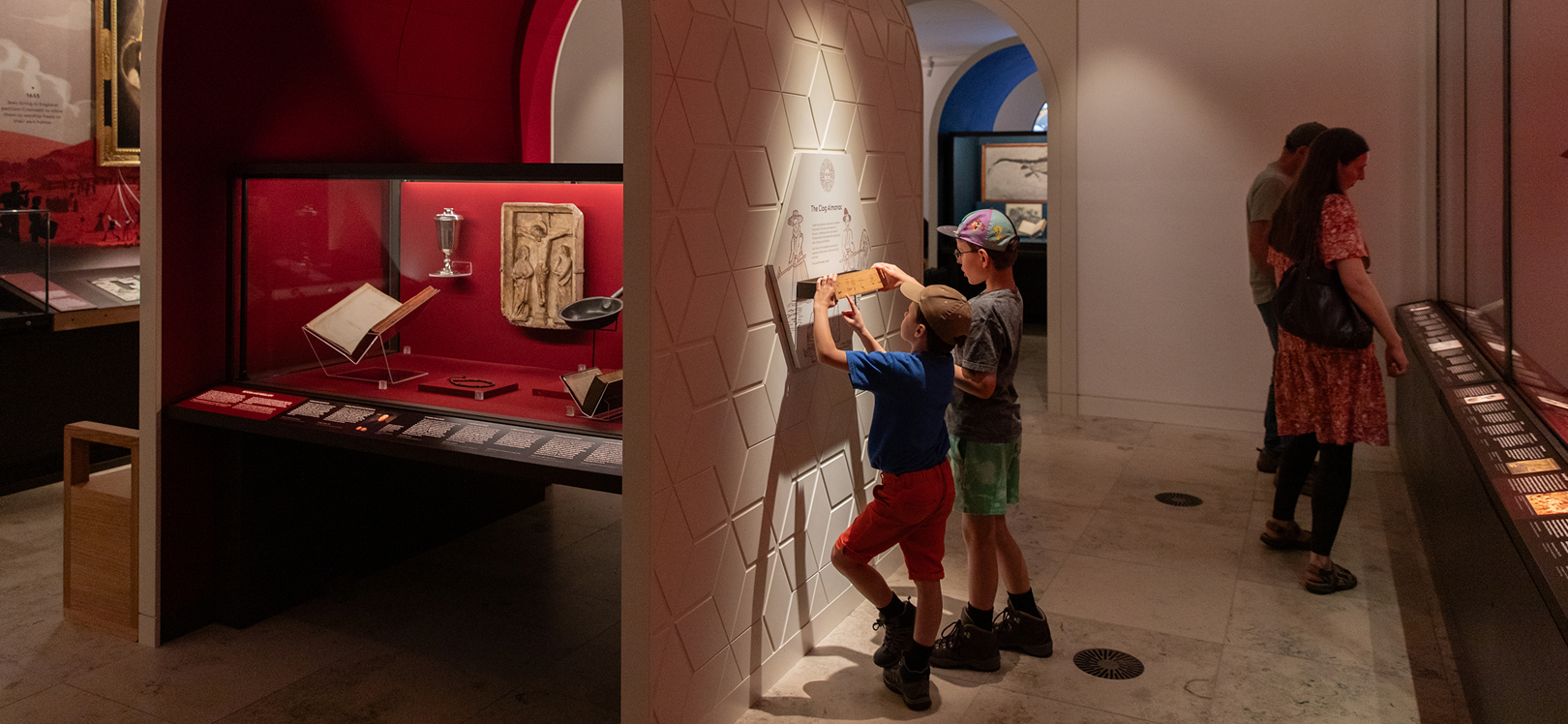Industry News
The Faith Museum opened its doors to the public for the first time this weekend
The Faith Museum explores the myriad ways in which faith has shaped lives and communities across Britain, through rarely seen objects, personal testimonies, and contemporary commissions.
The Faith Museum is part of the wider restoration and redevelopment of Auckland Castle, which has been made possible with a £12.4m grant from The National Lottery Heritage Fund, which was raised by National Lottery players.
Leading visitors on a journey through British history, the museum comprises a series of gallery spaces with an active programme of rotating displays and temporary exhibitions. The ground floor traces a path through 6,000 years of faith, beginning in the Neolithic period with the tactile Gainford Stone and ending in the year 2000. The displays feature objects on loan from 50 national and local institutions and private lenders, which complement The Auckland Project’s own collection.
The upper floor of the museum houses a diverse programme of temporary exhibitions and installations, reflecting contemporary issues and timeless ideas. The galleries open with a display of works by ten contemporary British artists, offering their individual perspectives on faith today.
The Faith Museum was officially opened on Saturday 7 October by Edward Perry, CEO of The Auckland Project, Jane Ruffer, Co-Founder of The Auckland Project, and Carol Pyrah, Trustee and Chair of the England, North Committee, for The National Lottery Heritage Fund.
Jonathan Ruffer, Founder of The Auckland Project, says: “The Faith Museum turned out to be the hardest piece of our jigsaw. We have tried to tell stories which put into context 6,000 years of human endeavour and the of the human spirit.”
Eilish McGuinness, Chief Executive at The National Lottery Heritage Fund, says: “It is so uplifting to see the Faith Museum open to the public, allowing an exploration of the heritage of faith in the UK spanning 6000 years. We are proud to have supported the creation of the museum, as part of our wider investment in The Auckland Project, thanks to money raised by National Lottery players. We believe in the power of heritage to ignite the imagination, offer joy and
inspiration, and to build pride in place and connection to the past – and this museum will provide that inspiration allowing the public to uncover enthralling heritage stories in these beautiful spaces.”
Lady Sainsbury, Chairman of The Jerusalem Trust, says: “The Judaic-Christian faith has been integral to the fabric of Britain for centuries, shaping our community values and traditions. Christian principles underpin our concepts of justice and equality, and have played a significant role in the development of education, art, music, literature and architecture as well as a generous spirit of care for our vulnerable and disadvantaged. Today, in a country that celebrates diverse expressions of faith and belief The Jerusalem Trust is delighted to have supported The Auckland Project with the Faith Museum which will provide a rich journey through our shared history.”
The 740sqm museum has seen extensive conservation work undertaken on the historically significant Grade I listed Scotland Wing of Auckland Castle, with refurbishments overseen by Purcell architects. The new purpose-built extension designed by Níall McLaughlin Architects takes the form of a medieval tithe barn and follows the line of the original perimeter wall of the castle. Conceived as a sacred storehouse, the monolithic, pitched roof building was constructed using Cop Crag sandstone, local to the North East, and the same as used at Durham Cathedral.
Programming will be a central part of the museum going forward, with events, talks and workshops enabling yet more stories to be told and more perspectives to be explored. Educational sessions for schools will ensure children of all ages are able to have their learning enriched by inspirational visits.
The Faith Museum is supported by The National Lottery Heritage Fund, the Jerusalem Trust and
the Kirby Laing Foundation.

